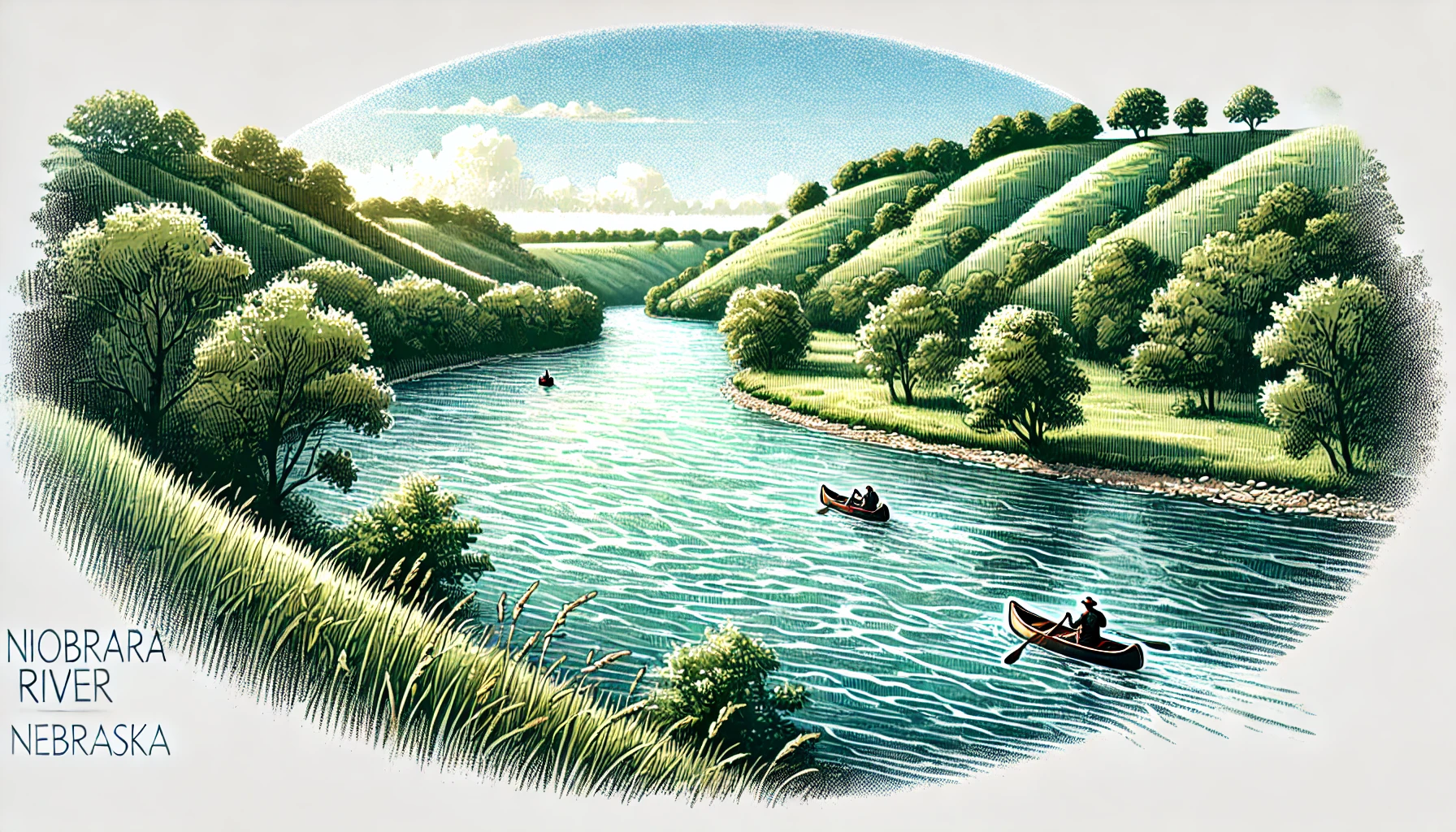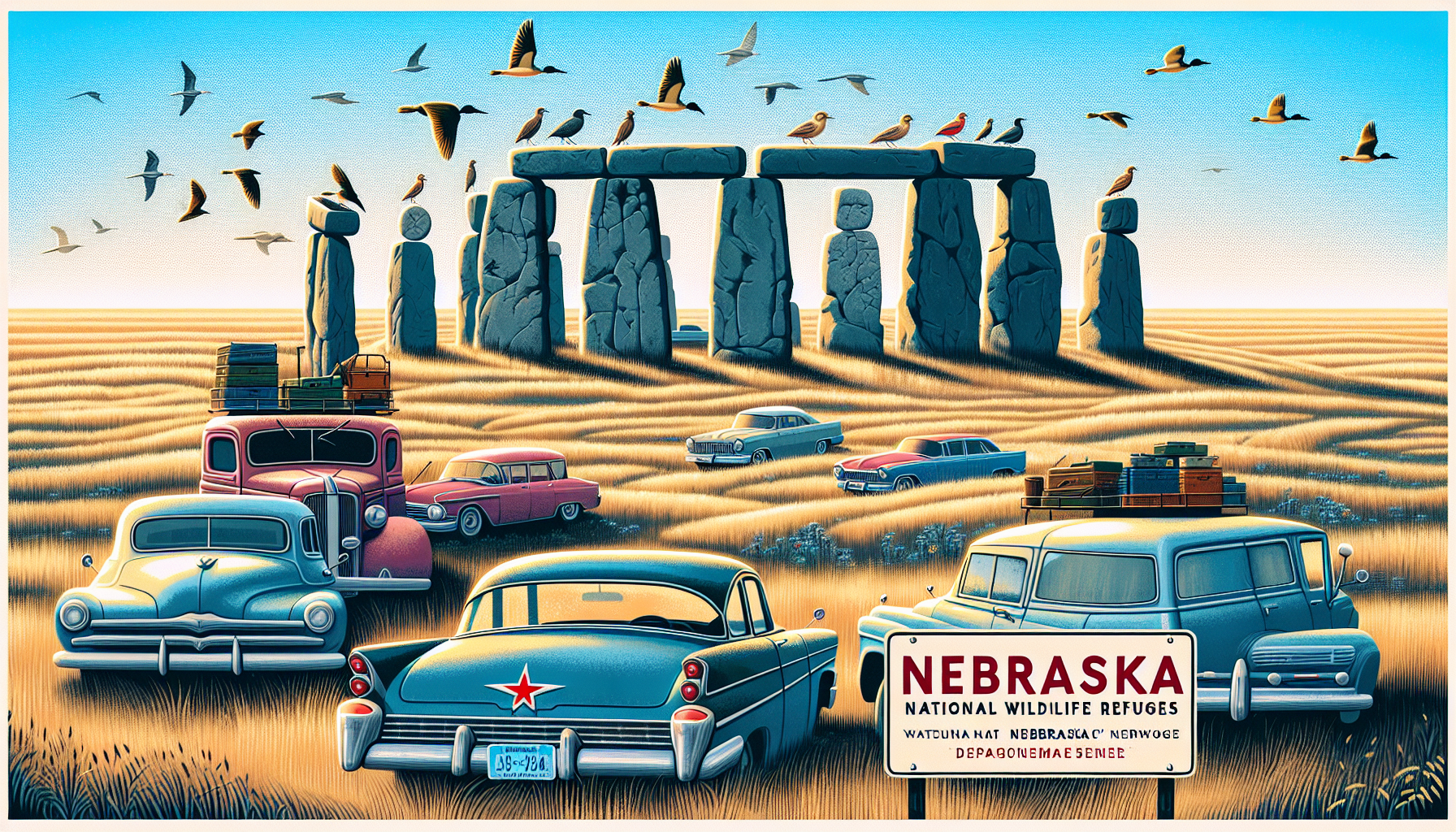Traveling Through Nebraska: Fen and Carr Wetlands

Located in the heartland of America, Nebraska's diverse geography supports a variety of wetland ecosystems, including fen and carr wetlands. These unique environments are characterized by distinct hydrological and geochemical conditions that support a wide range of plant and animal species. As travelers explore Nebraska's natural heritage, understanding the complexities of fen and carr wetlands is essential to appreciating their ecological significance.
Fen wetlands, also known as minerotrophic wetlands, are characterized by alkaline water with a high pH level due to the presence of minerals such as calcium and magnesium. These minerals are typically dissolved from surrounding rocks and soil, resulting in a unique combination of chemical and biological processes that support a specific community of organisms. In Nebraska, areas such as the Sandhills region and the Rainwater Basin provide ideal conditions for fen wetlands to thrive. The Platte River, which flows through the state, also supports various fen wetlands, including the famous Platte River Prairies, a critical habitat for the threatened Wood Stork.
Carr wetlands, on the other hand, are acid peatlands that are formed through the accumulation of organic matter in waterlogged conditions. These wetlands are dominated by tree species such as black spruce, tamarack, and paper birch. Nebraska's carr wetlands are less common than fen wetlands, but they can be found in areas with cooler and wetter climates, such as the state's Panhandle region. The Fontenelle Forest Nature Center, located near Bellevue, Nebraska, features a mix of fen and carr wetlands, showcasing the diversity of these unique ecosystems.
Fen and carr wetlands play a critical role in maintaining water quality, supporting biodiversity, and regulating the local climate. These wetlands serve as important habitats for migratory birds, amphibians, and aquatic species, providing a source of food and shelter. In Nebraska, the presence of fen and carr wetlands has also been shown to support small mammal populations, including the endangered black-footed ferret. Furthermore, these wetlands can act as filters, removing excess nutrients and sediments from the water, which helps to maintain the overall health of the ecosystem.
Travelers to Nebraska can explore various fen and carr wetlands throughout the state, each with its unique characteristics and attractions. The Audubon's Rowe Sanctuary, located near Kearney, Nebraska, offers guided tours of the nearby Platte River Prairies, providing a glimpse into the state's diverse wetland ecosystems. The sanctuary is particularly famous for its annual Sandhill Crane migration viewing events. Meanwhile, the Niobrara National Scenic River, which flows through the northeastern part of the state, supports a mix of fen and carr wetlands, as well as other unique ecosystems.
As Nebraska continues to face environmental challenges such as climate change, habitat degradation, and water pollution, protecting its fen and carr wetlands becomes increasingly important. These ecosystems provide essential ecological services that benefit both the state's natural heritage and its human residents. By understanding and appreciating the complexities of these unique ecosystems, travelers to Nebraska can gain a deeper appreciation for the state's natural beauty and play a role in preserving it for future generations.
Overall, Nebraska's fen and carr wetlands are unique and fascinating ecosystems that support a wide range of plant and animal species. By exploring these environments, travelers can gain a deeper understanding of the state's natural heritage and the importance of protecting these delicate ecosystems.
Fen wetlands, also known as minerotrophic wetlands, are characterized by alkaline water with a high pH level due to the presence of minerals such as calcium and magnesium. These minerals are typically dissolved from surrounding rocks and soil, resulting in a unique combination of chemical and biological processes that support a specific community of organisms. In Nebraska, areas such as the Sandhills region and the Rainwater Basin provide ideal conditions for fen wetlands to thrive. The Platte River, which flows through the state, also supports various fen wetlands, including the famous Platte River Prairies, a critical habitat for the threatened Wood Stork.
Carr wetlands, on the other hand, are acid peatlands that are formed through the accumulation of organic matter in waterlogged conditions. These wetlands are dominated by tree species such as black spruce, tamarack, and paper birch. Nebraska's carr wetlands are less common than fen wetlands, but they can be found in areas with cooler and wetter climates, such as the state's Panhandle region. The Fontenelle Forest Nature Center, located near Bellevue, Nebraska, features a mix of fen and carr wetlands, showcasing the diversity of these unique ecosystems.
Fen and carr wetlands play a critical role in maintaining water quality, supporting biodiversity, and regulating the local climate. These wetlands serve as important habitats for migratory birds, amphibians, and aquatic species, providing a source of food and shelter. In Nebraska, the presence of fen and carr wetlands has also been shown to support small mammal populations, including the endangered black-footed ferret. Furthermore, these wetlands can act as filters, removing excess nutrients and sediments from the water, which helps to maintain the overall health of the ecosystem.
Travelers to Nebraska can explore various fen and carr wetlands throughout the state, each with its unique characteristics and attractions. The Audubon's Rowe Sanctuary, located near Kearney, Nebraska, offers guided tours of the nearby Platte River Prairies, providing a glimpse into the state's diverse wetland ecosystems. The sanctuary is particularly famous for its annual Sandhill Crane migration viewing events. Meanwhile, the Niobrara National Scenic River, which flows through the northeastern part of the state, supports a mix of fen and carr wetlands, as well as other unique ecosystems.
As Nebraska continues to face environmental challenges such as climate change, habitat degradation, and water pollution, protecting its fen and carr wetlands becomes increasingly important. These ecosystems provide essential ecological services that benefit both the state's natural heritage and its human residents. By understanding and appreciating the complexities of these unique ecosystems, travelers to Nebraska can gain a deeper appreciation for the state's natural beauty and play a role in preserving it for future generations.
Overall, Nebraska's fen and carr wetlands are unique and fascinating ecosystems that support a wide range of plant and animal species. By exploring these environments, travelers can gain a deeper understanding of the state's natural heritage and the importance of protecting these delicate ecosystems.
